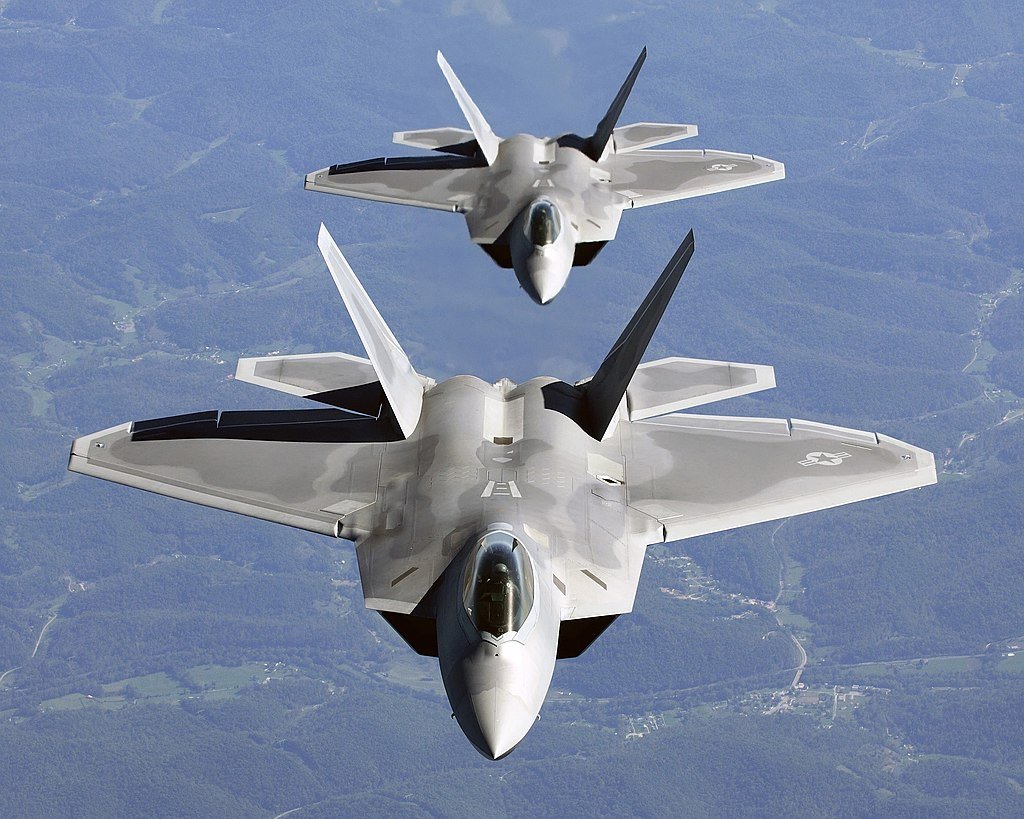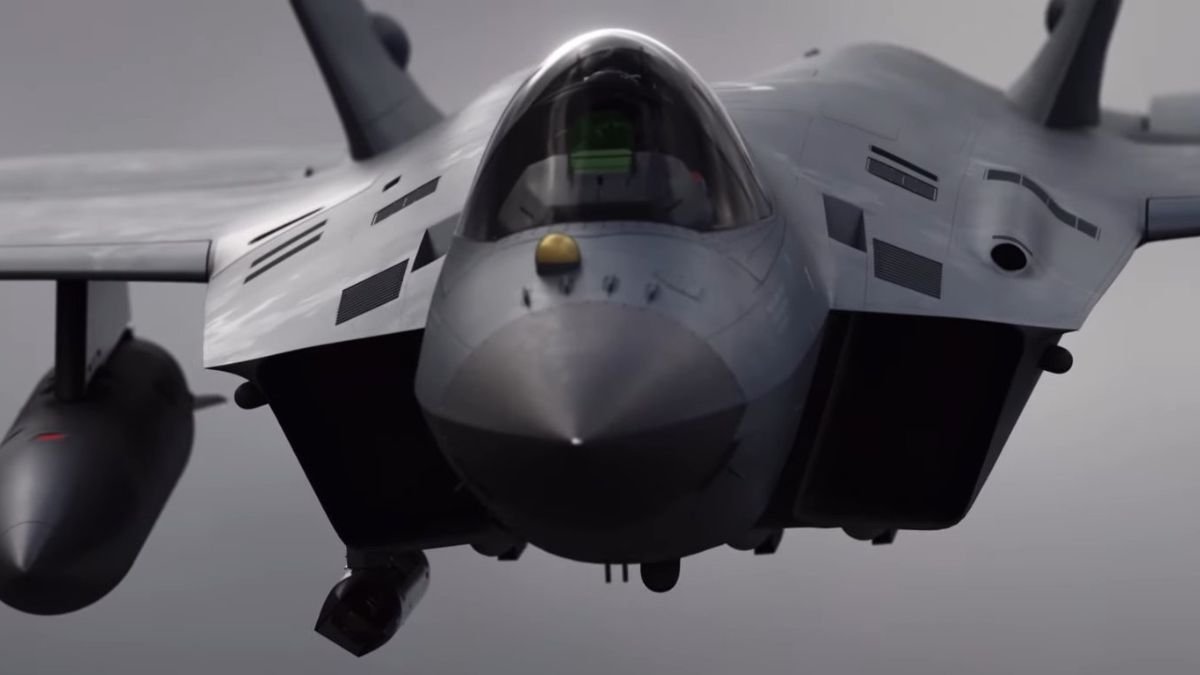On June 22, the US dropped 14 GBU-57 Massive Ordnance Penetrator (MOP), also known as bunker buster bombs, on two Iranian nuclear sites – Fordo and Natanz.
This was the first combat use of these 30,000-pound bombs that can penetrate 200 feet (60 meters) before exploding.
However, a successor to this unique munition is already in the works!
Officially named the Next Generation Penetrator (NGP), the new-age bunker buster bomb will be compatible with the B-21 Raider, the US’s next-generation stealth bomber planned as a replacement for the B-2 Spirit bomber.
The NGP is envisioned as a more advanced version of the GBU-57 MOP. It can also have an attached rocket booster for stand-off strike capabilities, and the ability for precision strikes within a Circular Error Probable (CEP) of 7.2 feet (2.2 meters), in both GPS-aided, degraded, and denied environments.
Furthermore, the US Air Force (USAF) is also interested in a Global Precision Attack Weapon (GPAW) bunker buster bomb, which is small enough to be fitted in the internal weapons bay of stealth fighters like the F-35.
In fact, the US started working on the next-generation bunker buster bombs almost as soon as the GBU-57 MOP began entering service in the early 2010s.
The Next Generation Penetrator Vs GBU-57
Currently, the B-2 Spirit bomber is the only aircraft capable of delivering the 30,000-pound GBU-57 MOP. Each B-2 can carry two GBU-57 MOP. However, the forthcoming B-21 Raider is also expected to be able to deploy the GBU-57 MOP, apart from the NGP.
The GBU-57 MOP utilizes a dual-mode guidance system that combines GPS (Global Positioning System) with an Inertial Navigation System (INS) for high-accuracy targeting.
The later, more advanced versions of GBU-57 MOP use an adaptive fuze system capable of detecting structural voids during penetration. It also times its detonation for maximum internal destruction.

The warhead used in the GBU-57 MOP is of the BLU-127 family. Notably, out of the 13,600 kilograms (30,000 pounds) of mass, the warhead contains approximately 2,082 to 2,600 kilograms (4,590 to 5,732 pounds) of high explosive, depending on the variant. The warhead constitutes only roughly 20 percent of the total weight of the bomb.
In February 2024, the USAF issued requirements for the NGP in a contracting notice.
“The United States Air Force (USAF) is seeking to identify capable vendors for the development of a prototype penetrator warhead design capable of defeating Hard and Deeply Buried Targets (HDBT),” the 2024 contracting notice said.
“Additionally, the USAF is seeking to identify vendors specialized in the design, development, and production of precision guidance systems for potential integration into this class of penetrator weapon,” it added.
The notice said that the design for NGP should integrate the lessons learned in the development of previous penetrator warhead programs.
“The prototype penetrator warhead design effort should allow integration of technologies acquired and lessons learned under previous penetrator warhead developments to meet performance requirements for the HDBT target set.”
Notably, the notice said that the NGP program should work in both “GPS-aided, degraded, and/or denied environments,” with a terminal accuracy of CE90 w/in 2.2m. This is a very high level of accuracy requirement, especially for employment in GPS-degraded or denied environments.
For perspective, the Tomahawk Block II intermediate-range, subsonic cruise missile that is launched from U.S. Navy ships and submarines has a Circular Error Probable of 10m. Similarly, the GPS-assisted INS-guided Joint Direct Attack Munition (JDAM) bombs have a CEP of 16.4 feet (five meters) under optimal conditions.

It called for a warhead weighing 22,000 pounds or less, that would be “capable of blast/ frag (mentation)/ and penetration effects.”
The notice further stated that the NGP should allow for the “possible integration of embedded fuze technology.”
The fuze technology is critical for bunker-buster bombs, as they must penetrate a hard surface before exploding.
Work on the NGP began almost as soon as the GBU-57 entered service in the early 2010s. The February 2024 notice mentions explicitly that the “2012 Hard Target Munitions (HTM) Analysis of Alternatives (AoA) and HTM AoA Excursion from 2019” contributed to the 2024 NGP design requirements.
The NGP can also integrate rocket boosters for standoff strike capabilities. The GBU-57 MOP is not powered. That is why they have to be dropped at close ranges.
Although the 2024 contracting notice does not say so, the USAF has separately said that it is interested in the addition of a powered standoff capability to the NGP.
Besides, in 2020, the USAF publicly disclosed interest in a separate next-generation Global Precision Attack Weapon (GPAW) bunker buster bomb that would be small enough to be carried internally by a stealthy F-35 Joint Strike Fighter, TWZ reported.
The USAF has also begun the process of inducting the precision-guided 5,000-pound-class bunker buster bomb, the GBU-72/B/B. The bomb was first used in a combat situation against the Houthi militia in Yemen last year.
Notably, the B-2 Spirit can only carry two GBU-57 MOP. However, the B-21 Raider is expected to be smaller than the B-2 Spirit, and can carry only one GBU-57 MOP. As such, the US would have required twice the number of B-2 Spirits to carry out the ‘Operation Midnight Hammer.’
On June 22, the USAF dropped 14 GBU-57 MOPs at two Iranian nuclear sites – Fordo and Natanz. This was the first combat use of these bombs.
The US intelligence is currently assessing the damage caused by these bunker buster bombs. The lessons drawn by the use of GBU-57 MOP in the ‘Op. Midnight Hammer’ will no doubt help the USAF in refining its requirements for the NGP.
Traditional US adversaries like Russia, China, and North Korea all have a long history of building deeply buried underground structures for military facilities. Therefore, a next-generation bunker buster bomb would be critical to USAF capabilities.
- Sumit Ahlawat has over a decade of experience in news media. He has worked with Press Trust of India, Times Now, Zee News, Economic Times, and Microsoft News. He holds a Master’s Degree in International Media and Modern History from the University of Sheffield, UK.
- VIEWS PERSONAL OF THE AUTHOR.
- He can be reached at ahlawat.sumit85 (at) gmail.com






